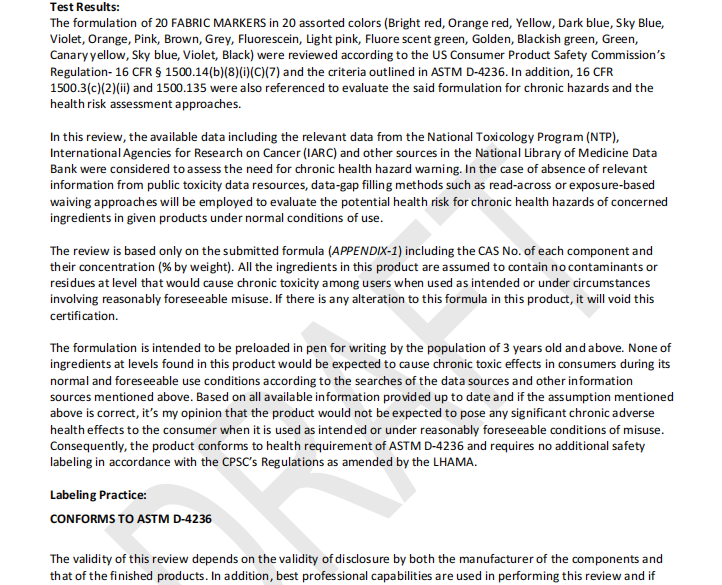Service Hotline:
0574-27880028
Ningbo KPL Technology Co., Ltd.
Mr.Chen :18668299419
Mr.Huang :13056889909
Mr.Wang :15067891153
Miss Geng :15088816300
Miss Hu : 15906559403
Advice or complaint:0574-27880028
American ASTM D4236
release time :2024-03-27 14:53:17
All art products sold in the United States must bear the words "ASTM D 4236 compliant" to confirm that they have been correctly labeled as chronic health hazards under the Federal Hazardous Art Materials Labeling Act (LHAMA). According to LHAMA, art supplies must include warnings if they cause acute harm - such as "swallowing harmful or fatal" or "potentially causing skin irritation" - and if they may cause chronic health effects such as cancer/disease, sterility, blindness, birth defects, or allergic reactions. Today, let's learn together with the editor of Huabiao Testing what is the ASTM D4236 test? What products are covered by ASTM D4236?
What is the ASTM D4236 test?
According to the US Consumer Product Safety Commission (CPSC) regulation 16 CFR 1500.14B8, art materials should be certified under the Art Material Toxicity Labeling Act (LHAMA) in accordance with ASTM D4236. Art materials include pigments, crayons, brushes, pencils, chalk, glue, ink, canvas, etc. Manufacturers or repackaging sellers of art materials should provide ABT toxicology experts with the ingredient formula of art materials to analyze whether they will produce chronic harmful ingredients to health.
What products are covered by ASTM D4236?
ASTM D4236 covers packaged art materials that are sold for artistic and handicraft purposes. This includes any product used by any individual in any specific age group for any artistic purposes.
The products covered may contain harmful substances in concentration or volume, which are high enough to cause long-term negative health problems to users.
According to the website of the Consumer Product Safety Commission of the United States, it covers art materials, but LHAMA includes:
Children's toys, baby products, stationery, art materials, food and food additives, cosmetics, care products, perfume, textiles, leather products, daily chemical products such as air fresheners, antifreeze, disinfectants, and some dyes, coatings, bleaches, etc
This standard does not apply to products that have been correctly labeled with known chronic health hazards.
The reference style for the report is as follows:
